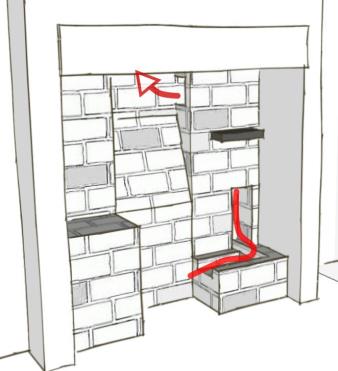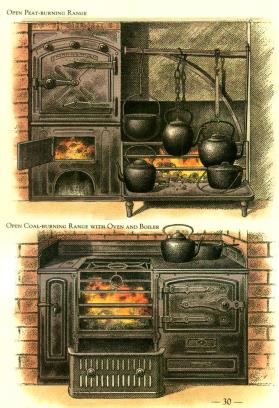By Glyn Hughes, Soliftec
22/12/2017
More Blogs here...
A new range for Denver House
The old miners cottage in Winster in Derbyshire is unusual in that it was locked and left in 1957, not having, we think, been altered since 1902. So itr was rather fun to be given the chance to refit the original kitchen range.
Well, not actually the original, as that was just too disintegrated with rust to use, but by a happy chance I came across exactly the same design for sale by a householder in Ludlow.

The range at Denver House, Derbyshire
Well, it looked exactly the same, but proved to be about 2% or so smaller all round. Odd? Almost certainly what has happened is that the Ludlow one is a copy. It is a simple matter for an iron foundry to dismantle a competitor's product, make sand moulds from each part and cast a copy part. The 'first' copies can then be used as patterns to make as many copy ranges - or whatever - as you like. This particular range type seems to occur all over the English Midlands and North from around 1850 to 1900.
It is worth mentioning how ranges of this type are fitted. There are flueways around the oven to get it hot, often with a sliding damper. Unlike modern stoves, these were not built-in to the unit itself, but had to be built on site by the installer. The diagram here isn't quite correct in this case, but you get the idea ...

How range flues are made

|
ADVERTISEMENT
TO ADVERTISE HERE
|